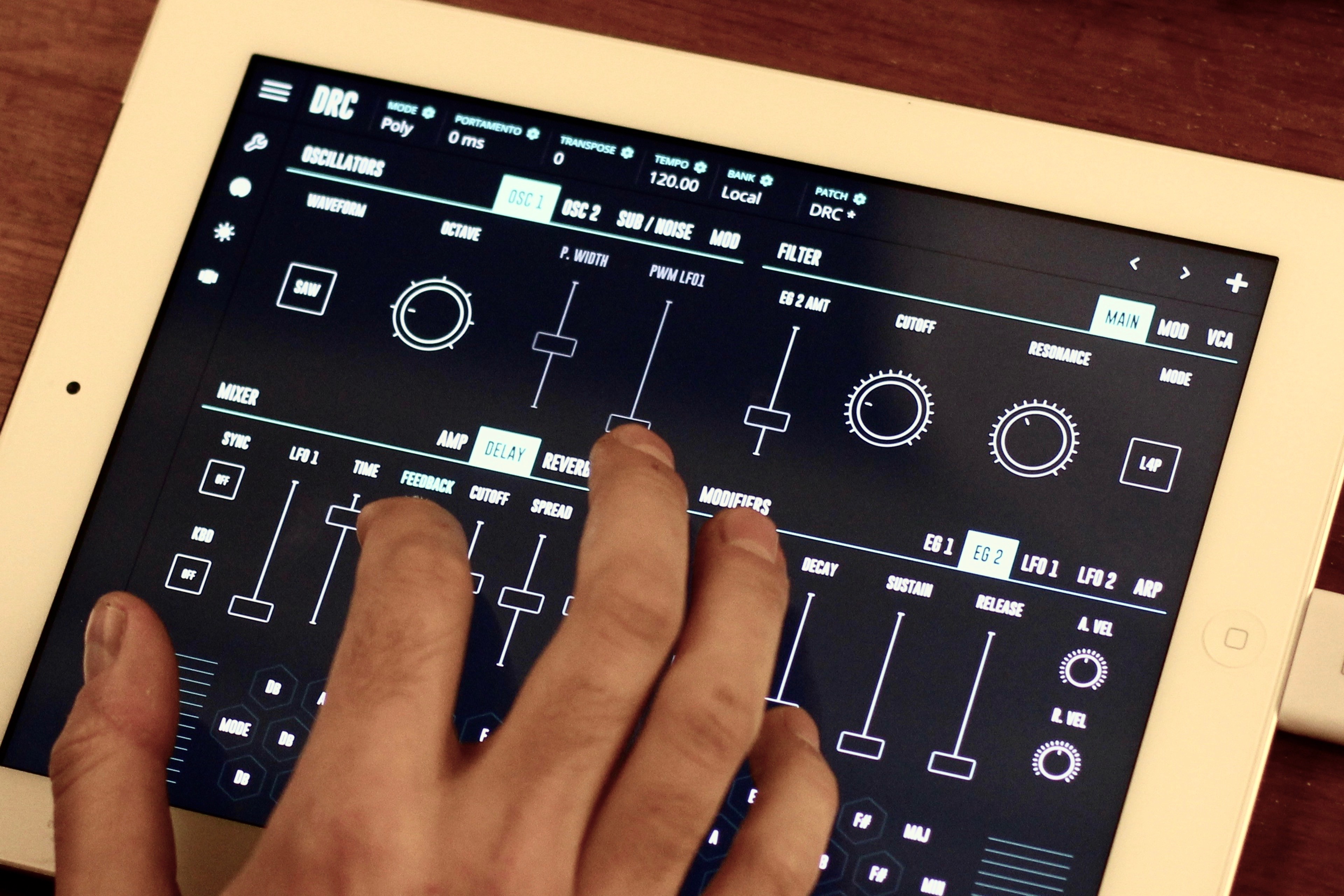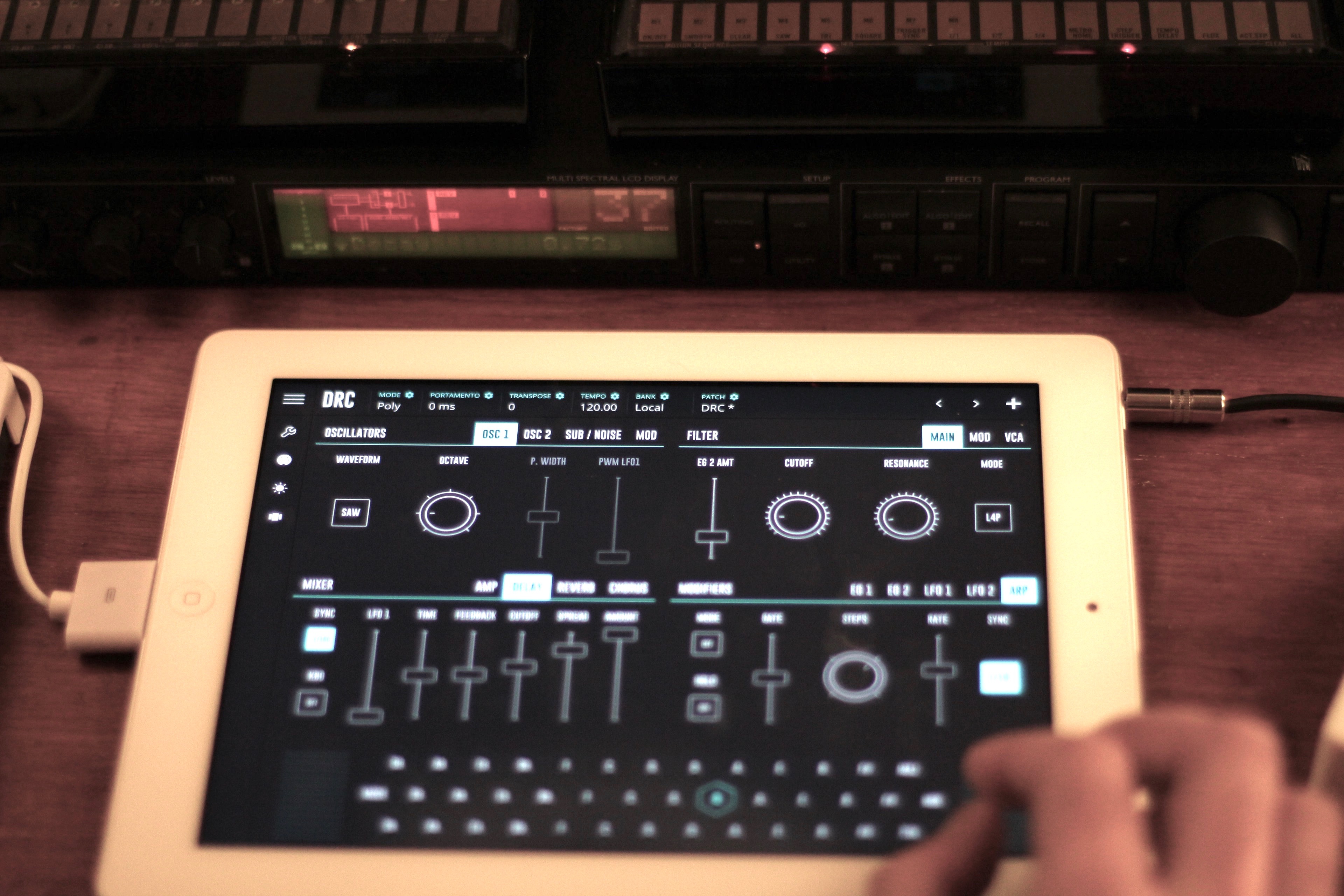Review: Imaginando DRC Synth
An elegantly designed, great sounding first product.

Portuguese developer Imaginando has come seemingly out of nowhere with its first virtual instrument, DRC, and in the process scored a minor coup few—if any—of even the most established developers can compete with by launching DRC across all platforms worth their salt simultaneously, including the usual suspects for Mac and PC, and upping the game to include iOS and Android.
Before we even get into what DRC actually sounds like, the magnitude of a young developer achieving full cross platform compatibility right from the start really can’t be overstated. Ask any seasoned studio owner who has been in business for over a decade and they will be all too happy to share with you how ridiculously long they waited for [insert well established music technology company name here] to adhere to the latest updates from Apple or Microsoft. Keeping a breast of the latest driver and core-level sound related updates is a mind-numbingly ugly business reserved for only the most devote hackers in the game. With the release of DRC, Imaginando have proven themselves to be exactly that.
Upon opening DRC for the first time, you’re greeted with a clean, spartan interface which the developers have obviously spent a lot of time thinking about. Everything is logically laid out and the parameters and the ranges they offer (with a few exceptions I’ll detail below) are well thought out and very easy to navigate. What’s more, their touch screen implementation is wonderfully well done and completely unhampered by the clumsy, tiny target zones found on so many lesser applications. Knobs turn and sliders slide just as you would expect them to. Even the drop down menus, a particularly sticky area for many iPad and other touch screen formats, are easily navigated, even when moving quickly.
Virtual analog synths are a dime a dozen these days, and when push comes to shove the raw oscillator sound of an individual synth will tell you far more about it’s quality than its well designed presets. In this case, I’m happy to report DRC’s oscillators sound incredibly analog and stood up well even against the classic Korg MS20 and Roland Juno 60 I had access to here in the studio for testing purposes. Where as many of even the most well respected software synthesizers tend toward a very linear and often slightly weedy sound when only the untreated oscillators are engaged, DRC’s have a certain indescribable analog power one might expect from the roughest Pansonic and Raster Noton tracks.

Envelope and filter characteristics would be the next logical point of evaluation, and in these two departments Imaginando falls just a hair short of reaching the big leagues. An option for linear or exponential curves on the envelopes would have opened up DRC to a wealth of different sound design possibilities, particularly in the realm of drum synthesis, and the attack times would benefit from being ever so slightly faster for exactly these sorts of sounds. Similarly, while the 12db filters churn and squelch in all the right ways, the 24 db low-pass resonates like an Irish flute at higher resonance settings making it rather limited in scope. That said, my conversations with the developers at Imaginando HQ gave me every confidence they are attentive listeners and devoted to fine tuning and tweaking DRC going forward.
On board effects can be both a bane and a blessing with virtual instruments. On the one hand, releasing an instrument without them risks having your presets sound entirely too raw and out of any real world production context. If the effects you include, on the other hand, don’t measure up to other plugins potential users inevitably have in their arsenal already, you risk selling the entire instrument short. In this area, DRC left me feeling slightly conflicted. The onboard delay is an absolute beast of virtual analog warmth, certain to appeal to fans of buttery, dark delays like the MXR Carbon Copy and much sought after Moogerfooger. The chorus and reverb, however, smack just a little too much of mid-80s Phil Collins for my taste, and I had trouble making them sit well in my own productions and opted to disable them in favor of my tried and tested workhorse fx in most cases. From a purely sound design / preset perspective, however, Imaginando have put the on board effects to good use and conjured up a staggeringly diverse range of tones and colours, and the higher range bass tones and classic Detroit techno chord stabs particularly shine.
All criticisms aside, DRC is an elegantly designed, great sounding first product, and establishes Imaginando as one of the most exciting young developers to appear on the scene in recent years. With a few minor tweaks to its already rock-solid cross-platform compatibility and sound quality, DRC would certainly be a worthy addition to many a virtual studio.
Check out the DRC here.

